100 years of DZ HYP
A mortgage bank for the cooperatives
Deutsche Genossenschaftshypothekenbank was founded in 1921 with the aim of closing a gap in cooperative lending. It was intended to provide long-term real estate credit to cooperatives specialising in short-term personal loans. German agriculture, which was in dire need of investment in the wake of the First World War, was a major beneficiary. As a subsidiary of Preussenkasse, which was the central institution of the co-operative organisation at the time, the Bank was initially housed at their headquarters at Am Zeughaus 1-2 in Berlin (pictured). Unlike its parent company, its activities were to extend throughout the empire, and therefore beyond Prussia’s borders.
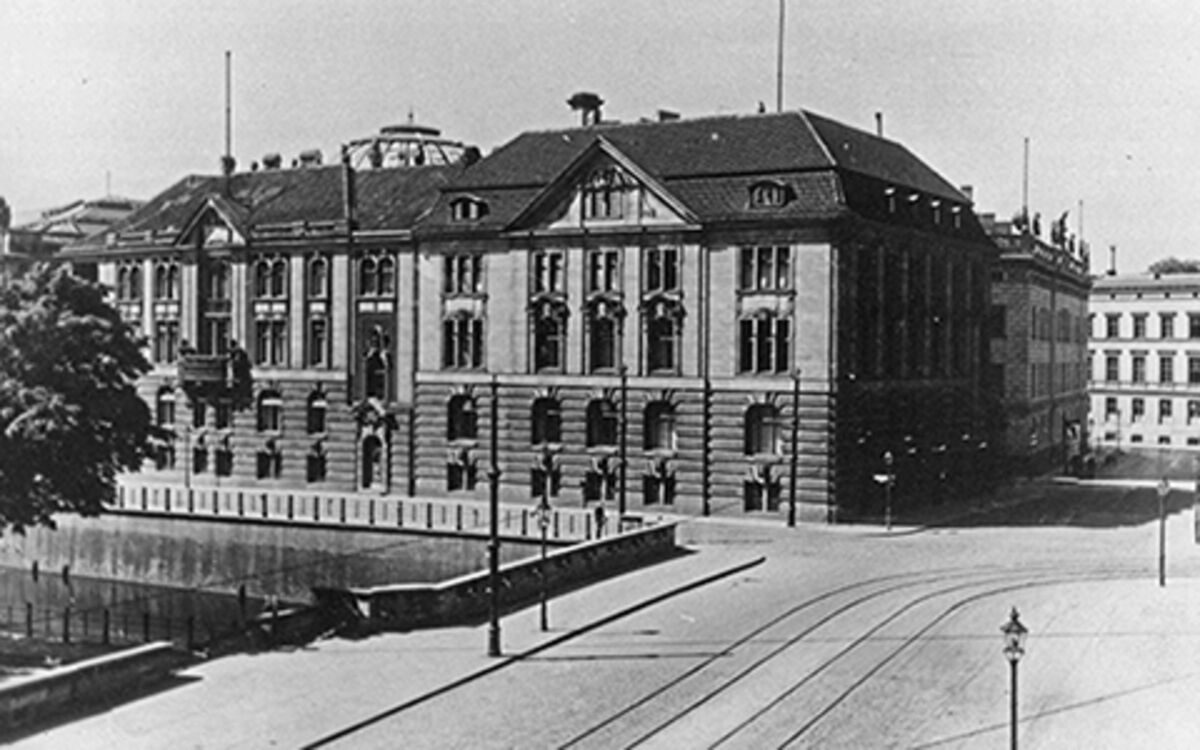
Challenging early years
The political uncertainties plaguing the Weimar Republic, the hyperinflation of the early 1920s and the global financial crisis at the end of the decade – all of it presented tremendous challenges to Deutsche Genossenschaftshypothekenbank right from the start. Nevertheless, it still accomplished its first Pfandbrief issues and large-volume financings by 1925. In 1930, it moved into its own offices in Raiffeisenhaus, which was built in 1912 near Potsdamer Platz (pictured). A few years after the move, a period of economic gridlock began for the Bank; when the Nazis seized power in January 1933, the cooperative sector was brought under state control politically. At the same time, new laws were introduced that both limited lending and new Mortgage Pfandbrief issues considerably.
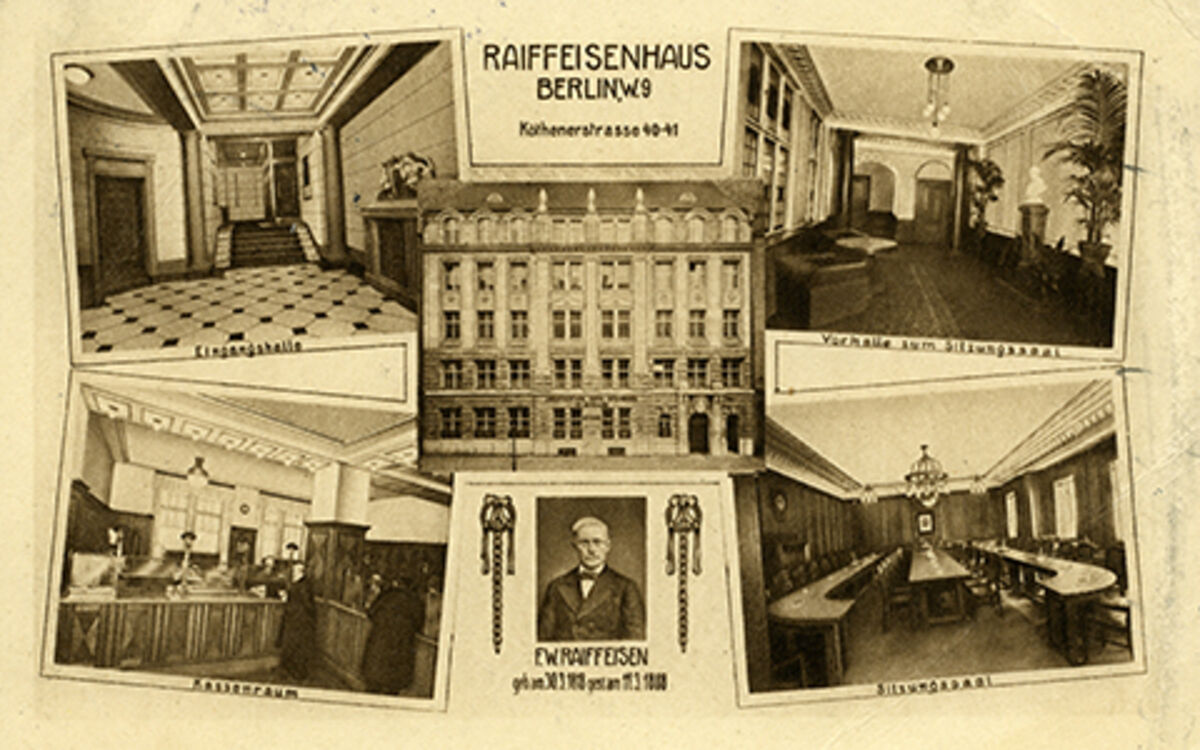
New start in Hamburg
In April 1945, the Deutsche Genossenschaftshypothekenbank building was destroyed by bombs. A provisional office was set up in Charlottenburg. Because the office was located in the Soviet Occupation Zone when the war ended, the Bank was subject to a ‘suspension order’ imposed there. After years of makeshift operations with support from its parent company and the German cooperative banks, the Bank was able to establish a branch office in Hamburg as a displaced institution in 1949. It initially occupied offices in Sprinkenhof (pictured), while also retaining its office in Berlin.

Good qualified staff a location factor
In the early 1950s, the Bank’s operations were driven significantly by state-subsidised residential construction which demanded enormous investment. The new headquarters in Hamburg were brought into question again by the location of the newly founded parent company, Deutsche Genossenschaftskasse. However, strong contacts with the supervisory authorities and, in particular, the highly qualified staff kept the Bank in Hamburg. As early as 1956, the Bank was able to appoint a woman as department head; shortly thereafter, a female employee representative joined the Supervisory Board. The Bank established the first Credit Committee to assess the risk of financings with a volume of 200,000 deutschmarks and above.
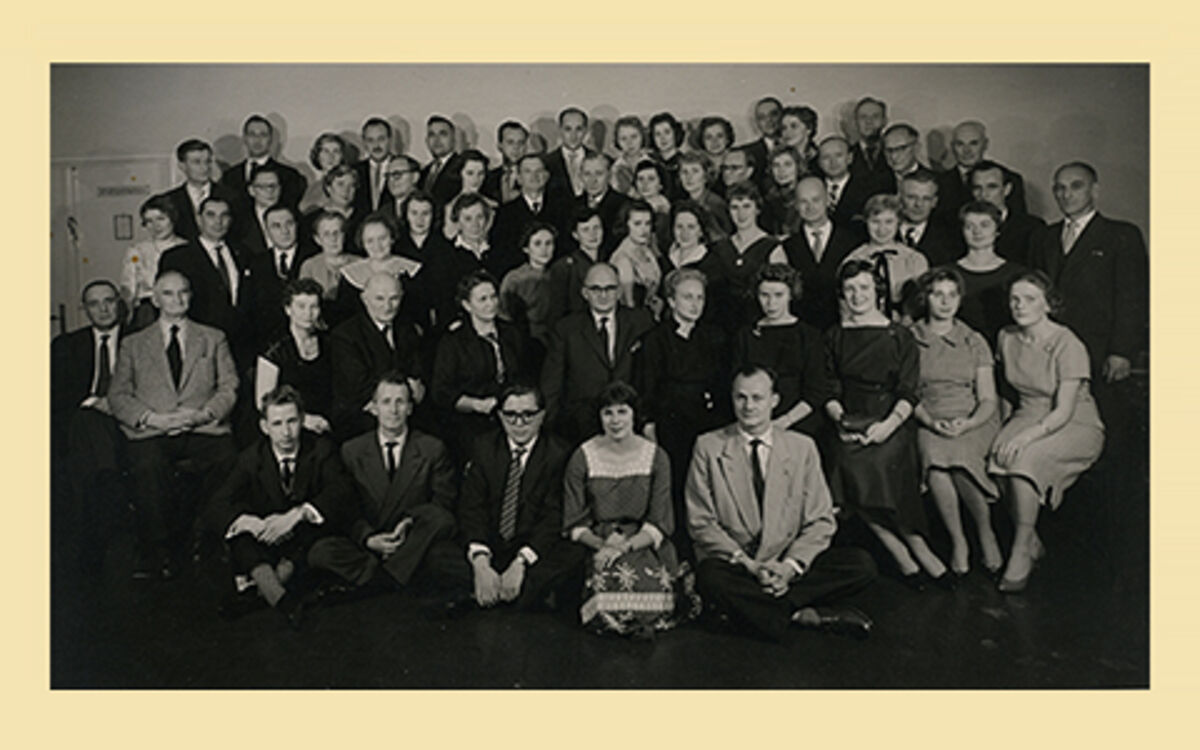
Our evolution into a leading mortgage bank business
Along with rising incomes, Germans’ demand for larger and better appointed homes grew in the 1960s. The dream of owning one’s own house or flat was now within reach, meaning that private construction financing became increasingly important. Residential construction and agriculture were the focuses of DZ HYP´s business model. It had developed into one of the leading German mortgage banks. Because the number of employees continued to grow, the Bank constructed a new building on Hamburg’s Ost-West-Strasse that offered roughly 250 employees modern open-plan workspaces, a subterranean garage, an open entry hall and a staff restaurant. In 1969, the Bank also moved its Berlin office to a newly constructed banking building in Charlottenburg.
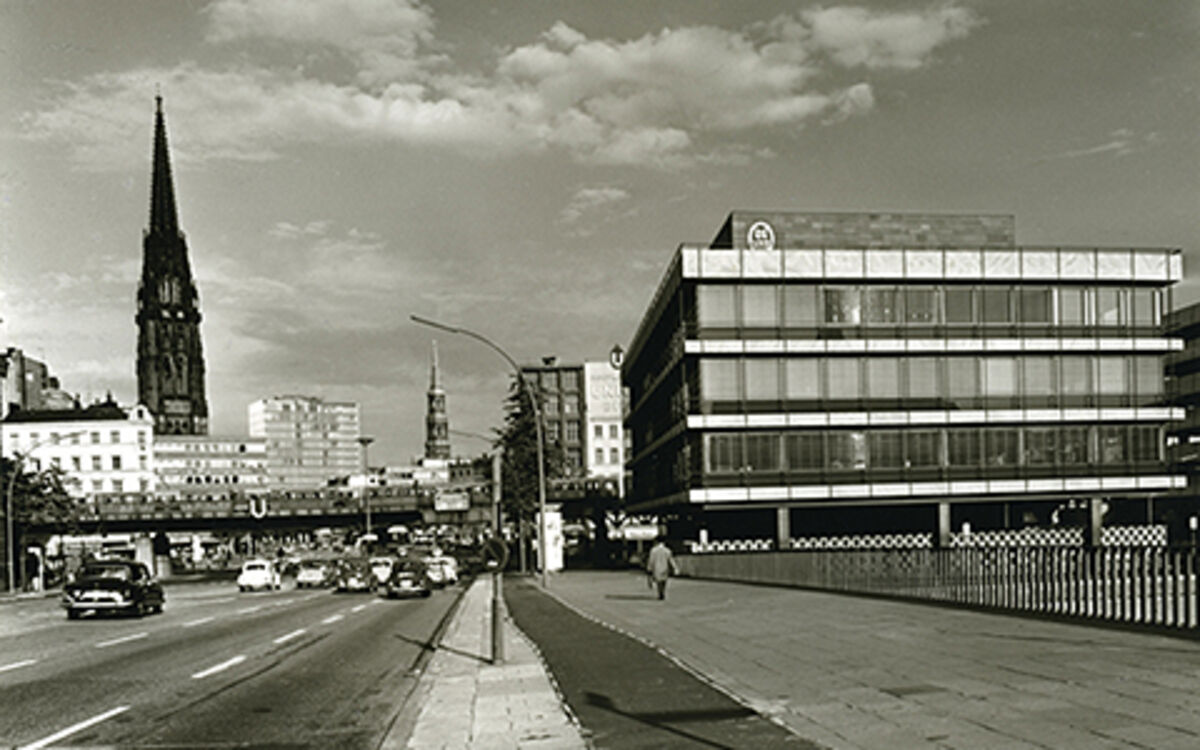
Close collaboration with cooperative banks
The hallmark of the next decade was DZ HYP’s close collaboration with the cooperative banks. In 1977, the Advisory Board was established comprising 20 members from the Management Boards of the cooperative banks from every German federal state. To signal the increased emphasis on the Cooperative Financial Network to others as well, the Bank unveiled a new logo in 1977 with colouring that referenced the cooperative brand family. At the end of the decade, DZ HYP was able the offer the full spectrum of products and services of a modern mortgage bank to the cooperative banks: private, free and non-profit residential construction financing, as well as long-term loans for small to medium-sized enterprises, agricultural enterprises and local authorities.
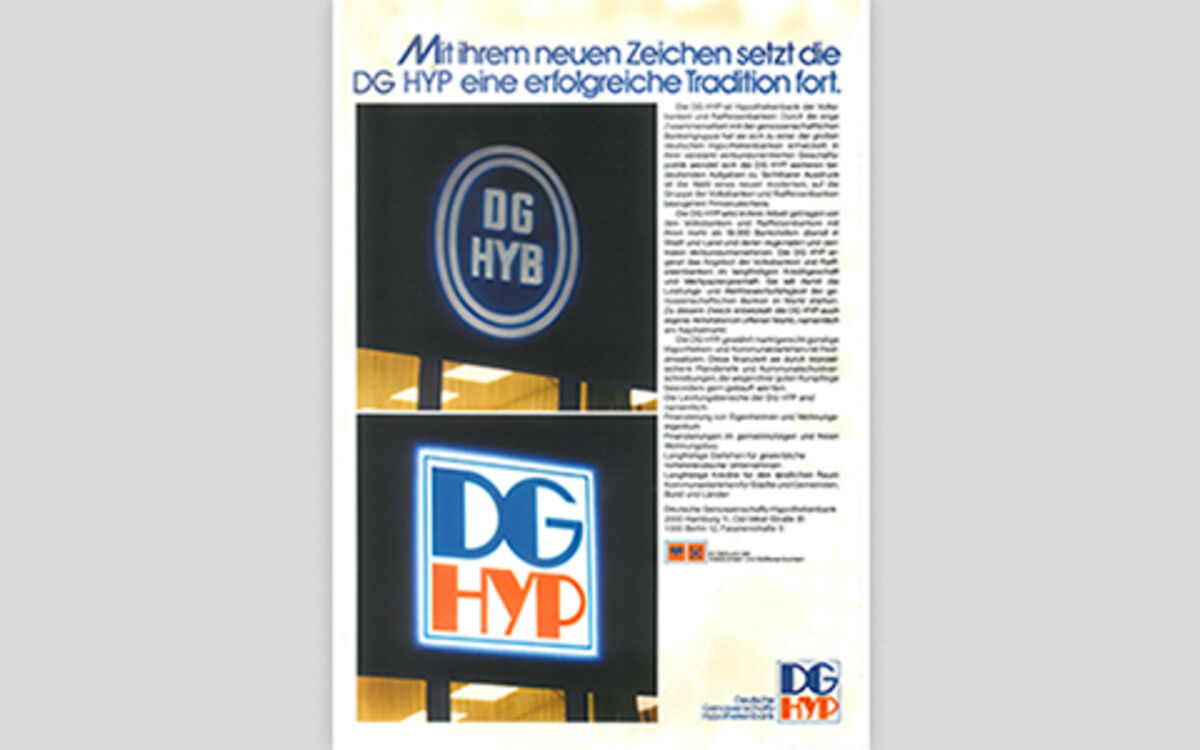
New head office on Rosenstrasse
Growing business fuelled staffing increases in the 1980s as well. The number of employees increased from 313 in 1977 to 461 just five years later. That is why DZ HYP acquired the newly-built (yet never used) headquarters of residential real estate development group Neue Heimat at Rosenstrasse in1983. The premises were set up to accommodate roughly 500 employees and were occupied starting in 1984. The available space was taken up quickly and it needed to be extended in two construction phases. The completion of the works was marked by a celebration in the winter garden of the new addition in 1994. The building remains the home of the Bank’s Hamburg head office.
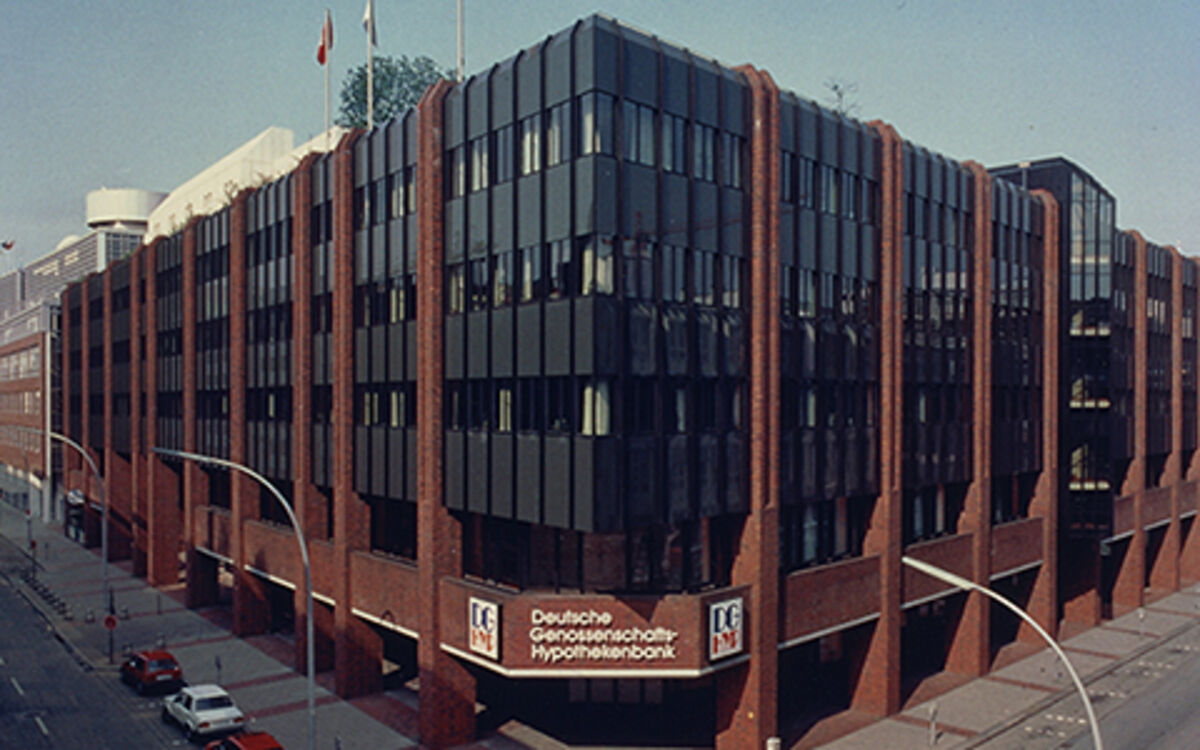
Powerful digitalization
DZ HYP recognized the benefits of digitizing its banking business early on. In 1977, it began online operations in loan administration, introduced computer-assisted loan approval in 1979, and subsequently computer-assisted condition adjustment. From 1990, the electronic information and communication system "Hypofix" accelerated the processing of loan applications and came up with a hotline that could be reached daily until 10 p.m. for promises on loans within minutes at conditions updated on a daily basis. It marked a milestone in the history of the then DG HYP by demonstrating its high performance in retail banking.
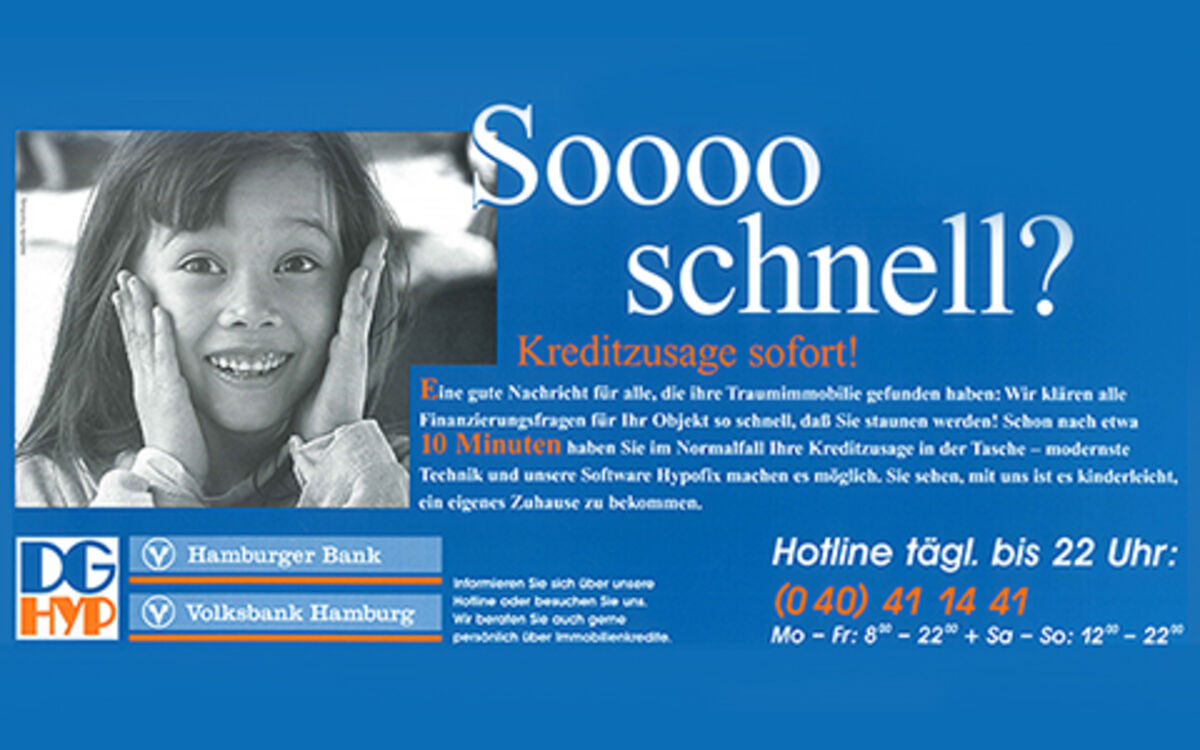
Strategic realignment
In 2001, DZ BANK transferred its commercial real estate business to DZ HYP. As a result, the business area developed into a new focus of the Bank’s activities. At the same time, private construction financing was characterised by increased competition as new players – especially online banks – entered the market and margins narrowed further. With this trend in mind, DZ HYP decided in early 2008 to realign its business model as the commercial real estate bank for the Cooperative Financial Network. An updated logo and a new claim conveyed the Bank’s drive to perform. In 2014 it was presented with the Real Estate Brand Award for the first time in recognition of being the bank with the strongest real estate brand.
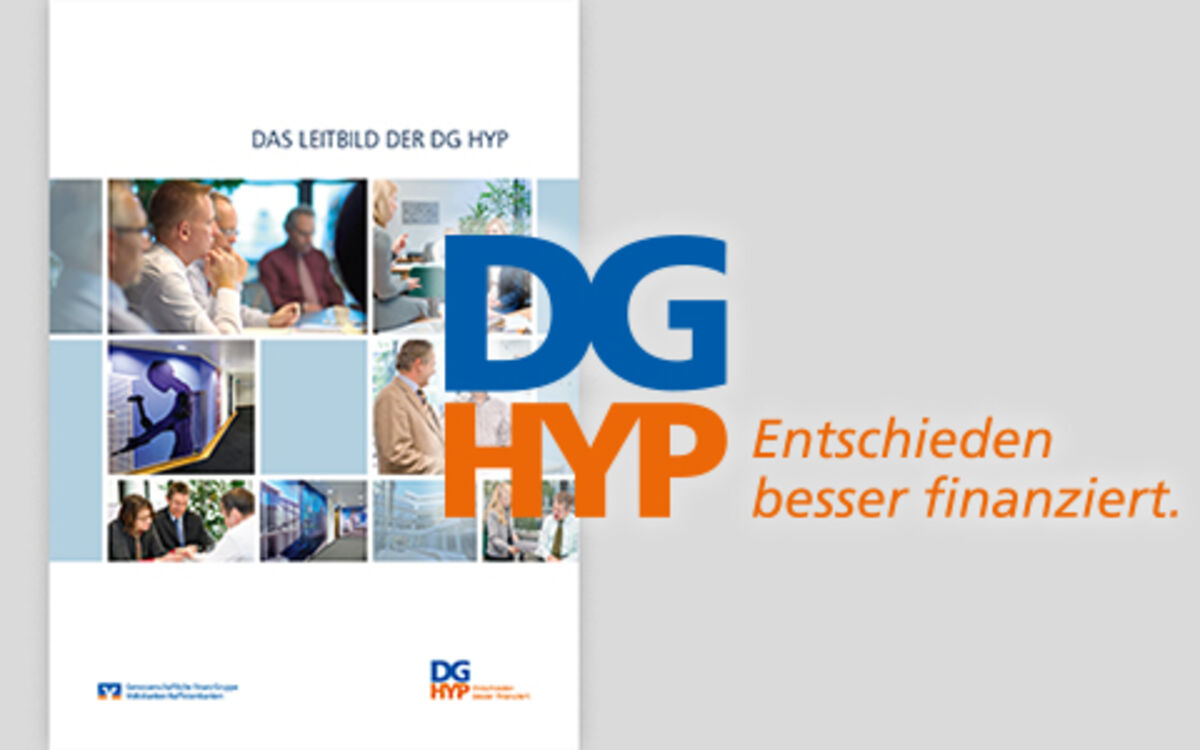
WL BANK merger partner
In 2018, DG HYP and WL BANK merged into DZ HYP. Located in Munster (Westphalia), WL BANK’s track record already spanned more than 140 years at this point. It was founded in 1877 as a public-sector entity (“Landschaft”) of the Province of Westphalia. Its purpose was to extend mortgage loans to Westphalia’s aristocratic and farming agricultural sector. It was not until 1973 that it extended its activities to include real estate finance and its reach to cover the entire state of North Rhine Westphalia. In 1987 it became a public limited company under German law and was integrated as a subsidiary into the WGZ BANK group, as it was known at the time. Before the merger with DG HYP, its activities were focused on financing private and residential real estate as well as local authority financing. DZ HYP’s second head office is now located in the building on Sentmaringer Weg, Munster.

Looking to the future, together
The merger into DZ HYP quickly proved to be the right step for the future. Today, DZ HYP operates successfully in three business segments: Corporate Clients, Retail Customers and the Public Sector. It is amongst Germany’s leading real estate financing providers and Pfandbrief issuers. As an employer, it has been honoured many times for its corporate culture that combines challenging work with attractive conditions for finding a work/life balance. The roughly 800 employees who work there are enthusiastically dedicated to the Bank, its clients and its partners – “together for the next 100 years”.
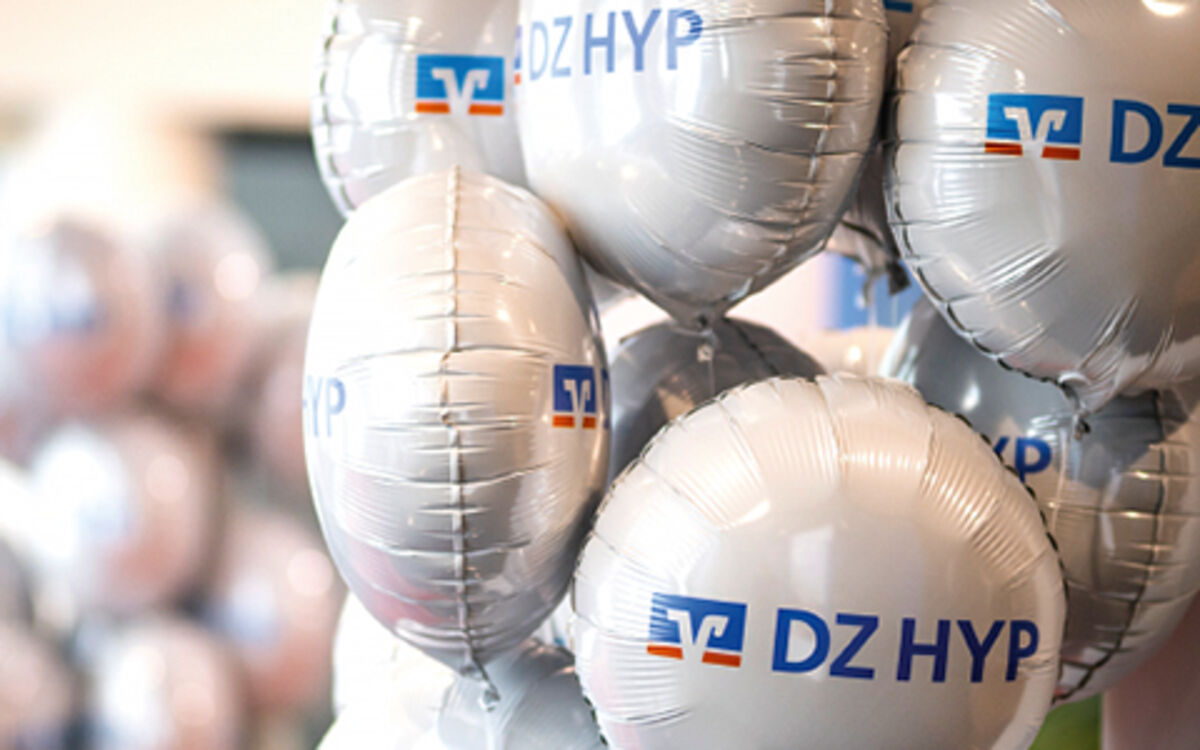
Our jubilee song
By and with DZ HYP employees.
DZ HYP on YouTube
By accessing the video, you accept for data from you to be transferred to YouTube and agree to their Privacy Policy.
